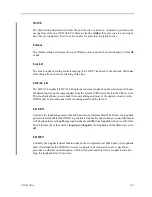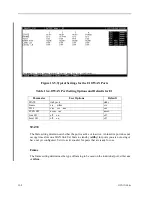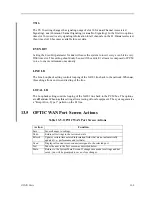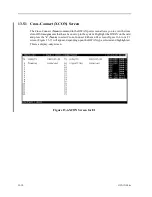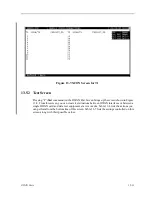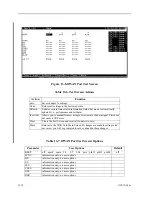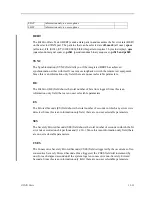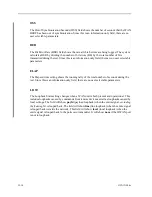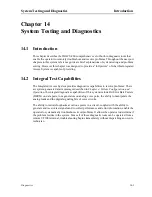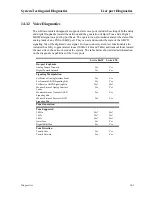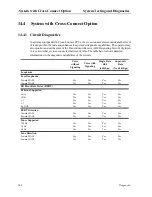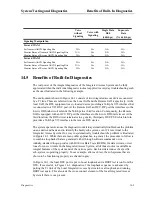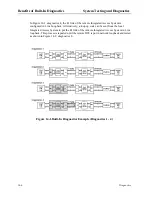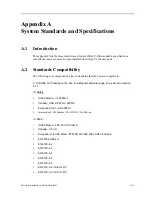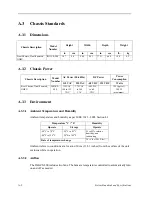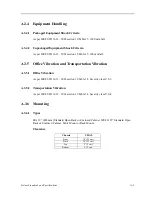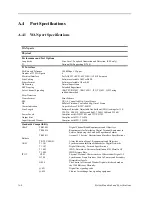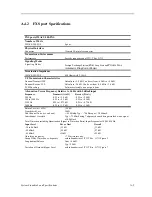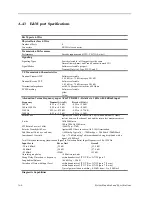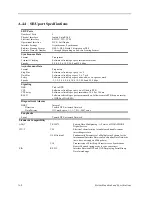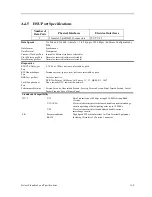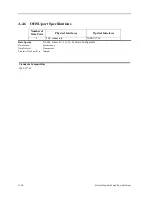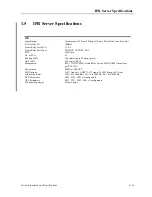
Diagnostics
14-5
System Testing and Diagnostics
Benefits of Built-In Diagnostics
14.5
Benefits of Built-In Diagnostics
The real power of the integral diagnostics of the Integrated Access System can be fully
appreciated when the individual diagnostic tools are applied to everyday troubleshooting such
as the one illustrated in the following example.
The environment shown in Figure 14-1 consists of two integrated access devices connected
by a T1 line. These are referred to as the Local IAD and the Remote IAD respectively. At the
local IAD, the DTE equipment is a co-located device providing a 56 Kpbs V.35 interface that
is connected to a V.35 HSU port. At the Remote IAD, an OCU-DP port that interfaces to the
4-wire DDS tail-circuit extends the 56 Kbps to a third location. Consequently, the Remote
IAD is equipped with an OCU-DP port that interfaces to the 4-wire DDS tail-circuit. At the
third location, the DDS circuit terminates in a generic, third-party DSU/CSU which in turn
provides a 56 Kbps V.35 interface to the remote DTE device.
The system operator can use the diagnostic tool kit to systematically troubleshoot the problem
on an end-to-end basis and to identify the faulty sub-system, even if it is external to the
Integrated Access System. One way to systematically troubleshoot the problem is illustrated
in Figure 14-1. While there are many other approaches, in general, the procedure to follow is
to combine loopbacks that are generated either through software commands or via
industry-standard loop-up codes with Bit Error Rate Tests (BERTs) for data circuits, or test
tones for voice circuits. In the Integrated Access System, all of those tools are available as
integral features of the system and of the various ports. Each test determines if a specific
sub-system is operating properly. In our example, after each test, the sub-systems that are
shown to be functioning properly are shaded in gray.
In Figure 14-1, the local HSU port is put in Local loopback and a BERT test is run from the
DTE. If successful, in Figure 14-1, diagnostics-3 the loopback sequence is advanced by
putting the T1 link of the Local Integrated Access System in Local loopback and running
BERT test again. This also tests the cross-connect element of the local Integrated Access
System if there is one present.
Voice
without
Signaling
Voice with
Signaling
Single Data
DS0
(64 Kbps)
Super-rate
Data
(N x 64 Kbps)
Signaling Manipulation
Toward WAN 1
Set Transmit ABCD Signaling Bits
N/A
Yes
N/A
N/A
Monitor Status of Transmit ABCD Signaling Bits
N/A
Yes
N/A
N/A
Monitor Status of Receive ABCD Signaling Bits
N/A
Yes
N/A
N/A
Toward WAN 2
Set Transmit ABCD Signaling Bits
N/A
Yes
N/A
N/A
Monitor Status of Transmit ABCD Signaling Bits
N/A
Yes
N/A
N/A
Monitor Status of Receive ABCD Signaling Bits
N/A
Yes
N/A
N/A
Summary of Contents for IMA CS-200 System
Page 18: ...8 Table of Contents Model No Running Head Table of Contents...
Page 22: ...4 List of Figures Model No Running Head List of Figures...
Page 130: ...4 46 General Features Model No Running Head CPU Troubleshooting IMACS 200 General Features...
Page 148: ...5 18 WAN Ports Model No Running Head WAN port Troubleshooting WAN ports...
Page 202: ...9 14 High Speed Data Ports Model No Running Head...
Page 208: ...10 6 OHSU Ports Model No Running Head...
Page 230: ...12 16 IPR Model No Running Head IPR Configuration Screens and Settings IP Routing...
Page 264: ...A 12 System Standards and Specifications Model No Running Head IPR Server Specifications...
Page 274: ...B 10 Error Messages Model No Running Head...
Page 294: ...20 Glossary Model No Running Head Zero Code Suppression...



